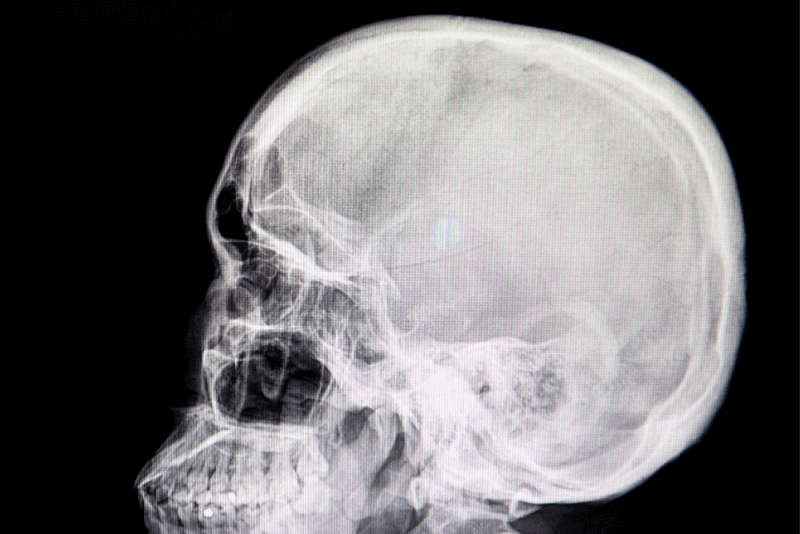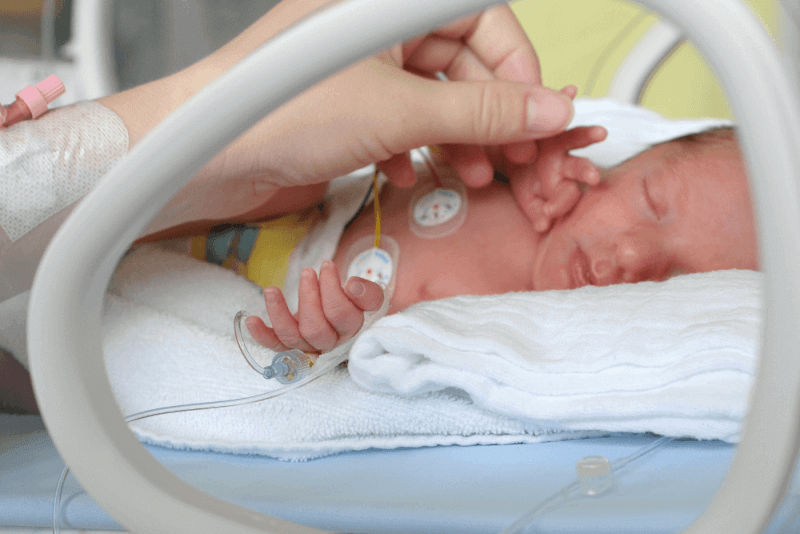What is a brain pacemaker?
A brain pacemaker, used in the treatment of psychiatric or neurological diseases, is a medical device that electrically stimulates the brain or nervous system. It is especially preferred in the treatment of diseases that are resistant to treatment or show severe symptoms.
The brain pacemaker, used to control involuntary movements such as tremors, consists of two main parts. The first part is two small electrodes placed in the area where problematic cells are concentrated in the skull. The other part is the battery that powers the electrodes, which is placed in a pocket opened under the skin below the collarbone. The electrodes stimulate or suppress the cells by giving electrical current to the problematic area.
Why is a brain pacemaker implanted?
The purpose of using a brain pacemaker is to treat diseases that cause involuntary muscle contractions and movements. However, the brain pacemaker does not completely cure diseases. Instead, it alleviates the symptoms. This leads to a significant improvement in patients' quality of life and a substantial reduction in medication doses.
Brain pacemaker surgery
The correct placement of the brain pacemaker is extremely important for the success of the procedure. Therefore, MRI and other imaging tests are required from patients to create the necessary brain map before surgery.
On the morning of the surgery, a frame is placed on the patients' skulls using the MRI images taken previously. Then, a brain tomography is performed. The MRI and brain tomography images are combined to precisely locate where the electrodes will be placed. Afterward, the patients are taken to the operating room.
Brain pacemaker surgery is performed in two stages. The first stage involves placing the electrodes in the problematic areas of the brain. During this stage, patients are under local anesthesia, maintaining communication between the patient and the surgeon. Continuous feedback is received from the patient while inserting the electrode rods. Also, brain sounds are monitored with microelectrode recordings, and two electrodes are placed where the patient's symptoms improve.
Afterward, the frame placed in the skull is removed, and the patient is given general anesthesia. This is the second stage of the operation, where the battery part that powers the electrodes is placed. The battery is placed under the collarbone and connected to the electrodes with an extension cable.
Surgery Summary
Duration of Surgery: 3-6 Hours
Anesthesia Method: General, Local
Hospital Stay Duration: 1-3 Days
Return to Work Time: 2-4 Weeks
Before brain pacemaker surgery
Before brain pacemaker surgery, various imaging techniques are used to create an accurate brain map. In addition, external tests are conducted to determine if patients are suitable for anesthesia. The general health condition of the patient is also crucial for the operation. Therefore, various blood and urine tests are required to provide information about the patients' health status. The results of these tests are extremely important in determining whether patients are ready for surgery.
Brain pacemaker surgery is a treatment method that affects patients not only physically but also psychologically. Therefore, it is recommended that patients consult with psychiatrists before the surgery to significantly reduce their anxiety levels.
Lastly, the adjustment of the medications taken by the patients and the cessation of drugs that may pose a risk for the surgery prepare the patients for the operation.
Possible side effects after surgery
There are some risks that may occur after brain pacemaker surgery. These risks include:
- Seizures
- Temporary pain and swelling at the implant site
- Infection
- Hardware complications
- Headache
- Stroke
- Confusion
- Difficulty concentrating
Risks of brain pacemaker surgery
Small holes are drilled in the skull to place the electrodes in the brain tissue. Additionally, a surgical procedure is performed to place a device similar to a pacemaker under the skin of the chest. The risks of the surgery include:
- Misplacement of the wires connected to the electrodes
- Seizures
- Brain hemorrhage
- Heart problems
- Stroke
- Nausea
- Infection
- Difficulty breathing
Which diseases are suitable for brain pacemaker treatment?
A brain pacemaker is used to alleviate symptoms caused by certain diseases. These diseases include:
- Parkinson's disease
- Major depression
- Epilepsy
- Obsessive-compulsive disorder
- Essential tremor causing tremors in certain parts of the body
- Tourette syndrome
- Dystonia causing involuntary muscle contractions in certain parts of the body
- Huntington's disease causing movement coordination disorder
Additionally, studies are ongoing to use brain pacemakers in the treatment of obesity and Alzheimer's disease.
Who cannot have a brain pac emaker implanted?
The characteristics of the patient group for whom brain pacemakers cannot be applied are as follows:
- Over 75 years old
- People with irregular blood pressure
- People with uncontrolled diabetes
- People with advanced or moderate memory impairment
Risks of Brain Pacemaker
The risks and side effects of the implant include:
- Numbness and tingling sensation
- Mood changes such as anger, mania, and depression
- Muscle tightness in the face or arm
- Visual changes such as double vision
- Speech problems
- Dizziness
- Balance problems
What is the post-surgery process for brain pacemakers?
After brain pacemaker surgery, the pacemaker needs to be programmed. This can be done during the hospital stay or a few weeks after discharge. Programming may take several sessions for some patients. In addition to programming, medication doses also need to be adjusted. These two processes are synchronized to work together.
After the pacemaker is programmed, it is crucial for patients to attend regular doctor appointments. The frequency of appointments varies based on the patient's condition. Additionally, the battery has a lifespan of 3 to 5 years. Therefore, if the battery is worn out during check-ups, it needs to be replaced. Replacing the brain pacemaker battery is an outpatient procedure.
Long-term effects of a brain pacemaker
The effects of brain pacemaker treatment continue in the long term. These effects improve over time. One of the main effects is the reduction in the medication doses patients need. Additionally, issues such as slowness, tremors, and stiffness generally decrease. Depending on the disease, the long-term effects of a brain pacemaker are as follows:
- For Parkinson's patients who responded well to medications initially but experienced side effects later, brain pacemaker treatment can improve movement slowness and tremors by 60% to 80%.
- For essential tremor patients, the tremor reduction is between 80% and 90%.
- For patients with involuntary movements caused by medications, brain pacemaker treatment can reduce involuntary movements by about 80%. Additionally, there is a significant reduction in the doses of medications with side effects after brain pacemaker treatment.
- Overall, about half of all patients treated with brain pacemakers show improvement in walking and balance functions.
- With brain pacemaker treatment, Parkinson's patients can regain their health from previous years. However, since Parkinson's is a progressive disease, brain pacemaker treatment does not stop the disease but significantly slows its progression. This results in a notable improvement in the quality of life for Parkinson's patients.
What should brain pacemaker patients pay attention to?
Patients who have undergone brain pacemaker surgery should strictly follow their doctor's recommendations. Additionally, the general points that patients need to pay attention to include:
- Patients with a brain pacemaker should always carry an identification card indicating that they have a brain pacemaker. This is extremely important for emergency medical interventions.
- Patients with a brain pacemaker may not be able to undergo MRI or other imaging tests. Even if the brain pacemaker is compatible with MRI in some cases, patients should always consult their doctor before the test.
- Patients with a brain pacemaker should avoid infrared light therapy that gives off heat during physical therapy sessions.
- Patients should inform their surgeons about their brain pacemaker before any additional surgical procedures.
- Patients should inform airport security personnel about their brain pacemaker when passing through security checks. Although many airport detectors are safe for brain pacemakers, some detectors may be triggered. In this case, a handheld detector should be used. However, the handheld detector should not be held over the brain pacemaker for more than a few seconds to avoid disrupting the pacemaker's programming.
- Patients with a brain pacemaker should avoid areas with large magnets and high-voltage equipment, such as high-voltage power lines, television and radio transmitters, smelting furnaces, and radar systems.
- Patients should protect the brain pacemaker from impacts during physical activities. A blow to the chest area can affect the function of the brain pacemaker.







